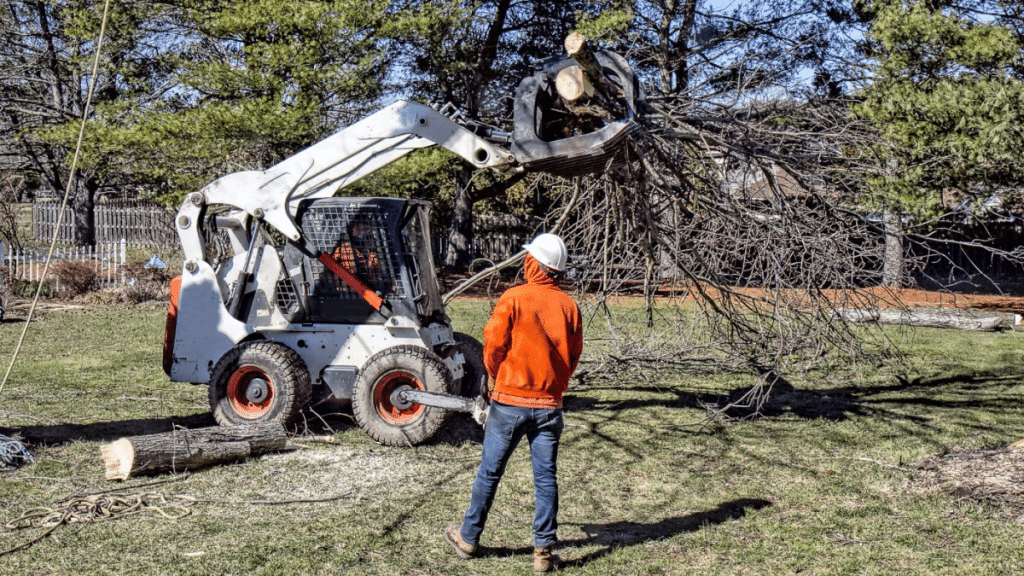Tree removal is essential for maintaining your property’s safety and aesthetics. Occasionally, trees may become hazardous or interfere with development plans, necessitating their removal. Engaging professional tree removal services ensures the task is carried out safely and efficiently. Various factors influence the cost of tree removal, and understanding them can help homeowners budget for the service. This guide aims to provide an in-depth look at the costs associated with tree removal in Sydney, offering valuable insights to help you make informed decisions.
Factors Influencing Tree Removal Costs
Several factors determine the cost of tree removal, each contributing to the overall quote you receive. Understanding these elements can help you gauge the expected expenses.
● Size and Type of the Tree: Larger and taller trees generally cost more to remove due to the increased risk and effort involved. The type of tree also plays a role; for example, hardwood trees may be harder to cut through compared to softer species.
● Tree Location and Accessibility: Trees located in hard-to-reach areas, such as those near power lines, structures, or dense landscapes, often incur higher removal costs. Limited access makes the job more complex and time-consuming.
● Necessary Permits and Regulations: In Sydney, certain trees may be protected by local council regulations, requiring permits for removal. Securing these permits can add to the overall cost.
● Emergency or Scheduled Removal Services: Emergency tree removal, such as after a storm, usually costs more due to the urgent nature and potential hazards involved. Scheduled removals, planned in advance, are typically more affordable.
Average Costs of Tree Removal in Sydney
Tree removal costs in Sydney can vary significantly based on the specific circumstances involved. Here’s a general breakdown to give you an idea of what to expect:
Small Trees (up to 5 metres): Removing a small tree typically costs between $150 and $500. These trees are easier to handle and pose less risk.
Medium Trees (5 to 10 metres): The removal of medium-sized trees can range from $500 to $1,200. The increased height and girth require more substantial equipment and effort.
Large Trees (over 10 metres): For large trees, expect to pay between $1,200 and $3,500 or more. These trees often require specialised equipment and additional labour for safe removal.
Cost Variations Due to Tree Species: Some tree species are more difficult to remove due to their hardiness or growth patterns. For instance, removing a gum tree can be costlier than removing a pine tree of the same size.
Additional Services: Stump grinding usually ranges from $150 to $500, depending on the stump’s size. Debris removal or chipping can add another $100 to $300 to the total cost.
Service Provider Comparisons: Costs can vary across different service providers. It’s beneficial to obtain multiple quotes to ensure competitive pricing and quality service.
How to Get an Accurate Tree Removal Quote
Obtaining an accurate quote is crucial for budgeting and ensuring fair pricing. Here are some tips to help you get a precise estimate:
1. Choosing a Reliable Service: Look for established companies with positive reviews and proper certifications. A reputable service will offer transparent pricing and detailed quotes.
2. Importance of Onsite Inspection: An onsite inspection allows arborists to assess the tree’s condition and location, providing a more accurate estimate. Avoid quotes given sight unseen.
3. Details to Provide: Supply information about the tree’s size, type, location, and any obstacles that may affect access. The more details you provide, the more accurate the quote will be.
4. Comparing Quotes: Don’t just look at the total price; consider what services are included. Cheaper quotes might exclude essential services such as cleanup or stump grinding, leading to additional expenses later.
Understanding Additional Costs and Hidden Fees
Beyond the basic removal fee, some additional costs might arise. Being aware of these can help prevent budget overruns.
Stump Grinding and Removal: If you want the stump removed, it’s often an extra charge beyond tree felling. Stump grinding is crucial for preventing regrowth and should be included in your quote if needed.
Clean-up and Disposal: Some companies might charge separately for debris removal or disposal. Ensure the quote covers all aspects of the job.
Difficult or Hazardous Removals: Trees posing extra dangers, like those near power lines or buildings, might incur additional fees for the specialised safety measures required.
Avoiding Unexpected Costs: Clarify all aspects of the job in the contract and ensure there are no ambiguous clauses. Discuss potential additional costs during the initial assessment.
DIY vs Professional Tree Removal: Cost Comparison
While DIY tree removal might seem like a cost-saving option, it’s essential to weigh the risks and actual costs involved.
Cost Breakdown of DIY Removal: Equipment rentals, such as chainsaws and safety gear, along with potential costs for waste disposal, add up. You might also need to hire a stump grinder.
Risks and Challenges: Attempting to remove a tree without proper training can be dangerous. Risks include injury from falling branches, damage to property, and even electrical hazards if the tree is near power lines.
Benefits of Hiring Professionals: Professional arborists have the equipment, expertise, and knowledge to perform the task safely and efficiently. They also handle the necessary permits and disposal.
Long-Term Cost-Effectiveness: Although professional services might seem pricier upfront, they save you the risk, time, and potential additional costs of DIY mistakes. Proper removal also prevents future issues like regrowth or property damage.
Conclusion
Understanding the factors influencing tree removal costs helps in making well-informed decisions. The tree’s size, type, location, required permits, and emergency services all play significant roles. Engaging professional tree removal services ensures safety and efficiency, often proving more cost-effective in the long run. By obtaining multiple quotes and clarifying all aspects of the job, homeowners can secure the best deals while avoiding unexpected costs. Safety and cost-efficiency should be priorities when planning a tree removal project.

